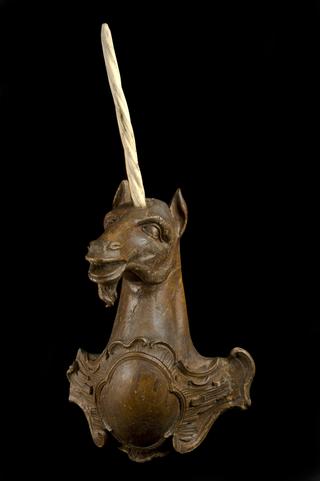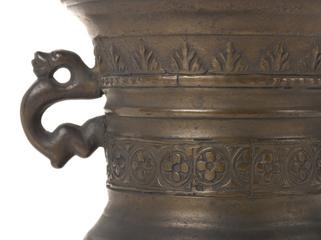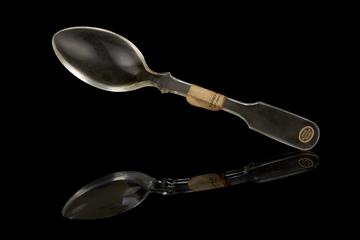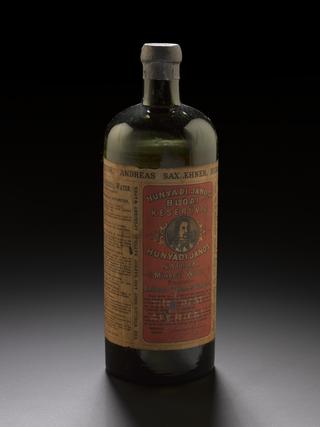
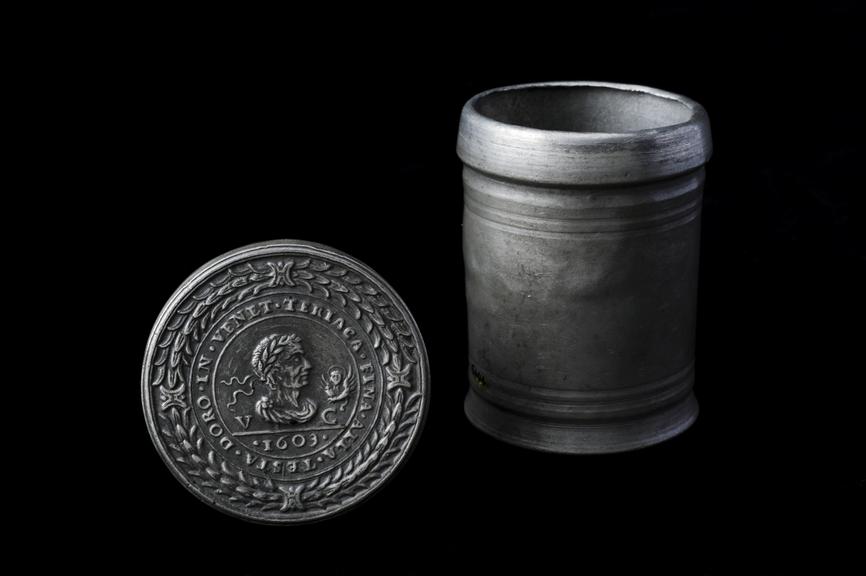
Cylindrical pewter theriac container with drop of original contents (may contain a low level of opiates). 70 mm x 53 mm diameter, .13 kg. Separate lid inscribed round profiled head "Teriaca fina alla resta doro in Venet." Unknown maker, from Venice, Italian, dated 1603.
Theriac was a thick syrupy liquid medicine (known as an electuary) made from as many as 64 different ingredients. Variations appeared over the centuries in different cultures and it was used as a cure for a number of illnesses until the end of the 1700s. The ingredients were often strange and exotic. For example, in some recipes the flesh of snakes was essential. This container still has a drop of the original contents.
The lid is inscribed with the words “TERIACA FINA ALLA TESTA DORO IN VENET”, which translates as “At the sign of the golden head in Venice” – tradesmen used picture signs to indicate their place of work. In many cities such as Venice, Montpellier and Toulouse, theriac was made under official supervision to prevent fake medicines being sold.
Details
- Category:
- Pharmacy-ware
- Collection:
- Sir Henry Wellcome's Museum Collection
- Object Number:
- A656713
- Measurements:
-
overall: 70 mm 53 mm, .134 kg
- credit:
- Wellcome Trust
